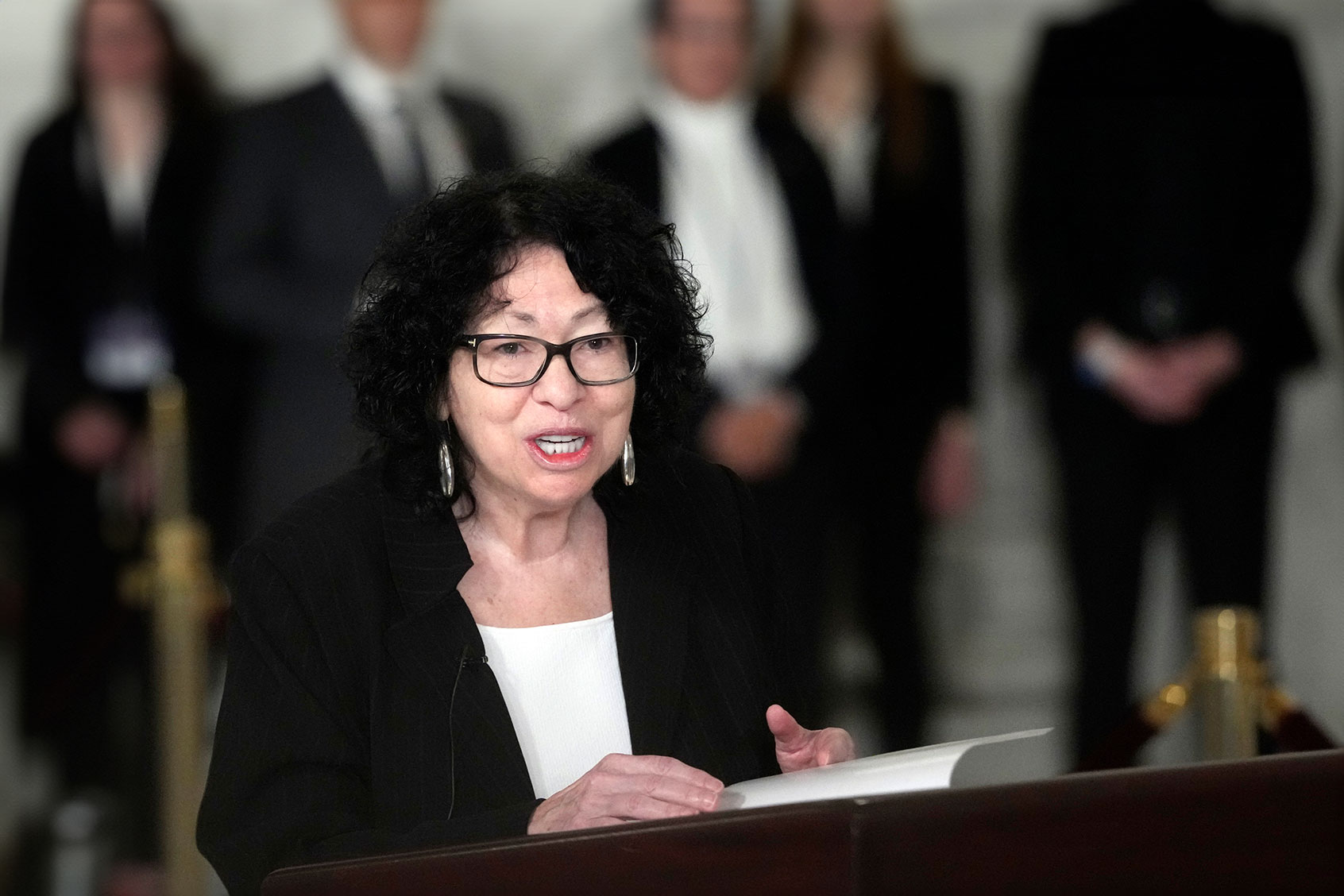The liberal justice called the order “unconscionably irreconcilable with our nation’s constitutional guarantees.”
- Justice Sonia Sotomayor wrote a dissenting opinion criticizing the majority’s decision and the Trump administration’s actions.
- Sotomayor argued the ruling allows the government to seize people based on their appearance, language, and type of work.
- The Supreme Court overturned a lower court’s order that had restricted ICE agents’ tactics in Los Angeles.
Supreme Court Justice Sonia Sotomayor blasted the Trump administration’s operation of the Los Angeles immigration raids, vowing not to stand idly by while the United States’ “constitutional freedoms are lost.”
On Sept. 8, the Supreme Court lifted a restraining order from a federal judge in LA who had restricted Immigration and Customs Enforcement (ICE) agents from conducting stops without reasonable suspicion.
In July, US District Judge Maame Frimpong of the Central District of California said the government can’t rely solely on the person’s race, the language they speak, the work they perform, and whether they’re at a particular location, such as a pickup site for day laborers.
However, the Sept. 8 reversal by the Supreme Court’s mostly conservative majority gave the Trump administration another victory, as Sotomayor condemned the vote.
“That decision is yet another grave misuse of our emergency docket,” Sotomayor wrote in a blistering, 21-page dissent on Sept. 8. “We should not have to live in a country where the Government can seize anyone who looks Latino, speaks Spanish, and appears to work a low-wage job.”
Sotomayor called the order “unconscionably irreconcilable with our nation’s constitutional guarantees.”
The justice, an Obama appointee, ripped her high court conservative colleagues and the government over the ruling. Sotomayor declared that all Latinos, whether they are U.S. citizens or not, “who work low-wage jobs are fair game to be seized at any time, taken away from work, and held until they provide proof of their legal status to the agents’ satisfaction.”oss California by broadening its scope from those only with criminal records to anyone in the United States without proper authorization. The crackdown ignited protests, prompting Trump to call in the National Guard and eventually the Marines to diffuse the outrage.
In June, the Trump administration ramped up immigration raids across California by broadening its scope from those only with criminal records to anyone in the United States without proper authorization. The crackdown ignited protests, prompting Trump to call in the National Guard and eventually the Marines to diffuse the outrage.
Sotomayor takes exception to Kavanaugh’s explanation
Justice Brett Kavanaugh, who agreed with the Trump administration, said in his concurrence on Sept. 8 that the District Court overreached in limiting ICE’s authority to briefly stop people and ask them about their immigration status.
“To be clear, apparent ethnicity alone cannot furnish reasonable suspicion; under this Court’s case law regarding immigration stops, however, it can be a ‘relevant factor’ when considered along with other salient factors,” Kavanaugh said.
He added, “Immigration stops based on reasonable suspicion of illegal presence have been an important component of US immigration enforcement for decades, across several presidential administrations.”Despite fears, still looking for work:
Sotomayor took exception to Kavanaugh’s comments. She said ICE agents are not simply just questioning people, they are seizing people by using firearms and physical violence.
Sotomayor added that the Fourth Amendment, which is meant to protect “every individual’s constitutional right,” from search and seizure, might be in jeopardy.
“The Fourth Amendment protects every individual’s constitutional right to be ‘free from arbitrary interference by law officers,'” Sotomayor said. “After today, that may no longer be true for those who happen to look a certain way, speak a certain way, and appear to work a certain type of legitimate job that pays very little.”








